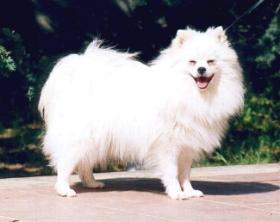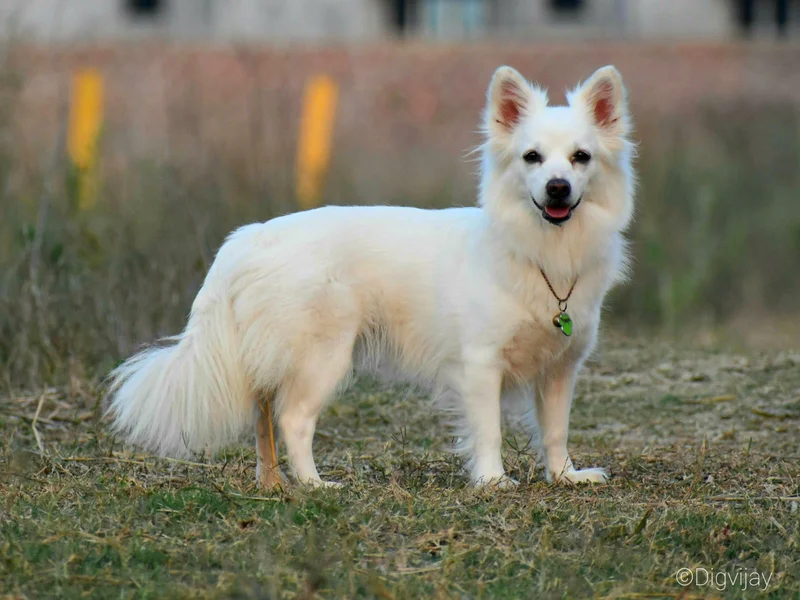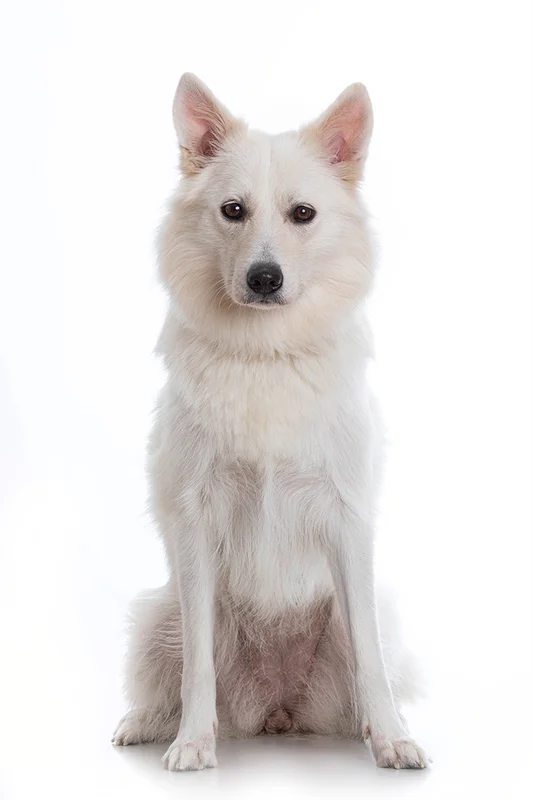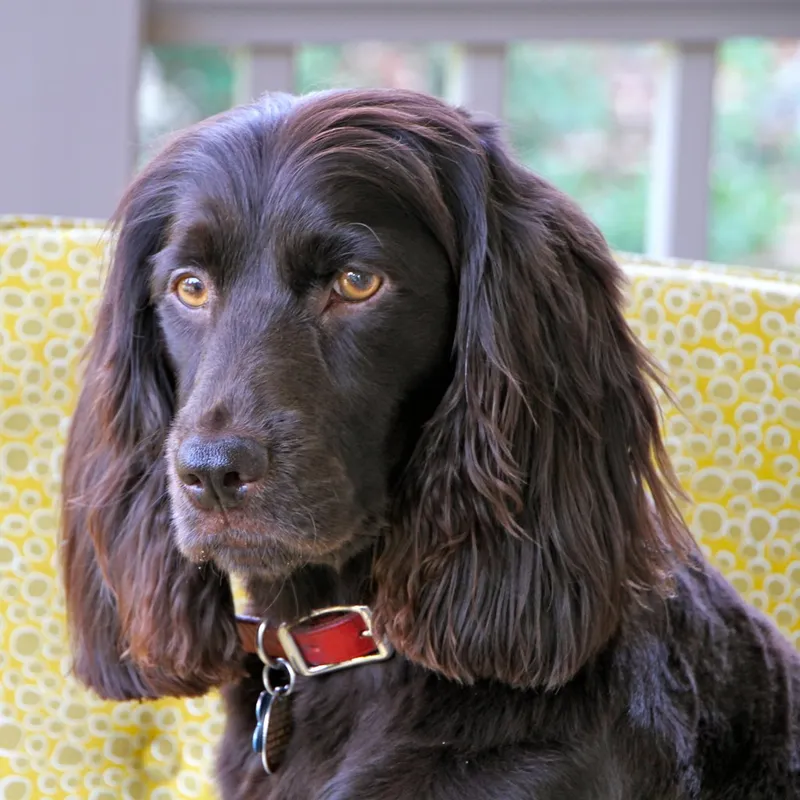Alopekis
The Alopekis is a lively and affectionate breed from Greece, known for its loyalty and intelligence. Ideal for families, they thrive on exercise and companionship.
Overview
🐕Breed Overview
✨Key Traits
💡What Makes Alopekis Special
One of the standout traits of the Alopekis is its loyalty to its family. These dogs form strong bonds with their owners and are known to be protective, making them excellent watchdogs.
Their intelligence and eagerness to please make training relatively straightforward, although they may require patience due to their independent nature. Alopekis dogs are also highly playful and enjoy interactive games, which helps keep them mentally stimulated.
Their adaptability allows them to thrive in various living situations, whether in a bustling city or a quiet rural area, as long as they receive adequate exercise and social interaction.
The Alopekis is a charming and energetic breed that has captured the hearts of dog lovers, particularly in Greece, where it originates. Known for its loyalty and intelligence, this breed has transitioned from a working dog to a beloved family companion. Historically, the Alopekis was bred for herding and guarding livestock, showcasing its strong instincts and protective nature.
Today, it is recognized for its adaptability to various living situations, making it an excellent choice for families and individuals alike. In terms of personality, the Alopekis is known for its affectionate and playful demeanor. These dogs thrive on human interaction and are eager to please, making them relatively easy to train with positive reinforcement methods.
Their intelligence and curiosity drive them to explore their surroundings, so regular exercise and mental stimulation are crucial to keep them happy and healthy. Alopekis are typically good with children and can coexist peacefully with other pets when properly socialized. When it comes to daily living, the Alopekis is adaptable to both urban and rural environments.
They require at least 60 minutes of exercise each day, which can include walks, playtime, and engaging activities like agility training. Their grooming needs are moderate, with regular brushing to manage shedding and maintain a healthy coat. Health-wise, the Alopekis is generally robust, but potential owners should be aware of common health issues and ensure regular veterinary check-ups.
Overall, the Alopekis is a delightful breed that brings joy and companionship to families. With their playful nature, intelligence, and loyalty, they make excellent pets for those who can provide the exercise and attention they need. Whether you're looking for a running partner or a cuddly companion, the Alopekis is sure to fit the bill, making it a breed worth considering for your next furry friend.
🎉Fun Facts
Alopekis dogs are highly trainable and excel in obedience competitions.
The Alopekis is known for its fox-like appearance and agility.
They are often referred to as 'Greek Alopekis' to highlight their heritage.
Breed Characteristics
Family & Friends
Good Behavior
Get Up & Go
Household Harmony
Temperament & Personality
✨Key Traits
🐕Core Temperament
The Alopekis is known for its friendly and affectionate temperament. They are typically good with children and can coexist peacefully with other pets when properly socialized.
This breed is alert and protective, making them excellent watchdogs. Their playful nature and intelligence allow them to engage in various activities, from fetch to agility training.
However, they can be stubborn at times, requiring consistent training and positive reinforcement to ensure they follow commands. Overall, the Alopekis is a well-rounded breed that thrives on companionship and interaction.
💫Personality Profile
The Alopekis is a friendly and affectionate breed that thrives on human companionship. They are known for their playful nature and enjoy engaging in various activities with their families.
This breed is typically good with children and can adapt well to living with other pets when properly socialized. Alopekis dogs are alert and protective, making them excellent watchdogs.
Their intelligence allows them to learn commands quickly, but they can also exhibit a stubborn streak, requiring consistent training and positive reinforcement. Overall, the Alopekis is a well-rounded breed that makes a wonderful family companion.
🔊Vocal Tendencies
The Alopekis has a moderate noise level, with a tendency to bark when alerting their owners to potential intruders or when playing. They may also vocalize during play or when seeking attention.
While they are not excessive barkers, their alertness can lead to barking at unfamiliar sounds or sights. Proper training and socialization can help manage their barking tendencies, ensuring they are well-behaved in various situations.
Affection & Social Traits
Energy & Activity
Communication Style
Care Requirements
🏃♂️Exercise Requirements
Daily Exercise
The Alopekis is an active and energetic breed that requires regular exercise to maintain its physical and mental well-being. Ideally, an adult Alopekis should engage in at least 60 minutes of exercise each day. This can be broken down into multiple sessions, such as two 30-minute walks or one longer session that includes playtime.
Activities like running, fetching, and agility training are particularly beneficial, as they cater to the breed's natural instincts and energy levels. Puppies may require shorter, more frequent play sessions to avoid overexertion, while senior dogs may benefit from gentler activities such as leisurely walks or swimming. Regular exercise helps prevent obesity, supports cardiovascular health, and reduces the likelihood of behavioral issues stemming from boredom or pent-up energy.
Insufficient exercise can lead to weight gain, destructive behaviors, and increased anxiety, making it crucial for owners to prioritize daily physical activity.
Preferred Activities
🏠Living & Adaptability
Space Requirements
The Alopekis is a medium-sized breed that can adapt well to various living environments, including apartments, houses with small yards, or larger rural settings. However, they thrive best in homes with access to outdoor space where they can run and play freely.
For apartment dwellers, it is essential to provide ample opportunities for exercise and mental stimulation, such as regular trips to the park or engaging in interactive games indoors. The breed's energy level and playful nature mean that they can become restless or bored in confined spaces, leading to potential behavioral issues.
Therefore, owners should ensure that their Alopekis has enough room to move around comfortably and engage in physical activities.
Climate Preference
🍲Feeding Guide
Schedule
Food Types
Portion Size
Special Nutritional Needs
Alopekis may have specific dietary needs based on their activity level and age. High-quality dog food that meets their nutritional requirements is essential.
Owners should monitor their dog's weight and adjust portions accordingly to prevent obesity. Some Alopekis may be prone to food sensitivities, so it's important to observe any adverse reactions to certain ingredients and consult a veterinarian for dietary recommendations.
✨Grooming Requirements
Grooming Overview
The Alopekis has a medium-length double coat that requires regular grooming to keep it healthy and free of mats. Shedding occurs seasonally, so brushing at least once a week is recommended to manage loose hair and reduce allergens in the home.
During shedding seasons, more frequent brushing may be necessary. Bathing should be done as needed, typically every few months or when the dog gets particularly dirty.
Regular nail trimming, ear cleaning, and dental care are also essential components of the grooming routine to maintain overall health and hygiene.
Care Schedule
Brush weekly; bathe every 2-3 months; trim nails every 2-4 weeks.
Health Profile
⚕️Health Care
Regular veterinary care is vital for the Alopekis's lifespan. Routine check-ups, vaccinations, and preventive treatments can help catch health issues early and maintain optimal health throughout their life stages. Owners should also be proactive in monitoring their dog's health, including dental care and weight management, to promote longevity.
Health Issues Overview
⏳Average Lifespan
Genetic Factors
Genetics play a crucial role in the Alopekis's lifespan, as certain hereditary health issues can affect their overall health and longevity. Responsible breeding practices that prioritize genetic diversity and health testing can help reduce the risk of inherited conditions. Potential owners should seek reputable breeders who conduct health screenings and provide transparency about the breed's lineage to ensure a healthy dog.
Living Conditions
The Alopekis thrives in environments that provide ample opportunities for exercise and social interaction. Living in a home with a yard or access to parks can significantly enhance their quality of life and longevity.
Additionally, a stable and loving environment with regular human interaction contributes positively to their emotional well-being, which can influence their lifespan. Exposure to various stimuli and socialization with other dogs and people can also help prevent behavioral issues that may arise from boredom or anxiety.
🏥Common Health Issues
Hip Dysplasia
Warning Signs
🔬Diagnosis
Veterinarians typically diagnose hip dysplasia through physical examinations and X-rays.
💊Treatment
Treatment options may include weight management, physical therapy, or surgery in severe cases.
📝Management Tips
Maintain a healthy weight, provide joint supplements, and engage in low-impact exercises to support joint health.
Patellar Luxation
Warning Signs
🔬Diagnosis
Diagnosis is usually made through physical examination and observation of the dog's movement.
💊Treatment
Surgical intervention may be necessary in severe cases.
📝Management Tips
Weight management and controlled exercise can help manage symptoms; consult a veterinarian for specific recommendations.
🛡️Preventive Care
🔬Hip Evaluation
Hip Evaluation assesses the hip joints for dysplasia and other abnormalities, crucial for preventing joint issues.
📅 Recommended at 12 months and periodically thereafter.
🔬Patellar Luxation Screening
Patellar Luxation Screening evaluates the knee joints for dislocation, important for maintaining mobility and comfort.
📅 Recommended at 12 months and periodically thereafter.
Training
🧠Intelligence & Trainability
💪Work Drive
The Alopekis has a strong work drive, stemming from its historical role as a herding and guarding dog. This breed thrives on tasks and mental challenges, making it essential for owners to provide regular opportunities for engagement.
Activities such as agility training, obedience competitions, and interactive games can help satisfy their need for mental stimulation. Without sufficient engagement, Alopekis may become bored and exhibit undesirable behaviors, such as excessive barking or destructive chewing.
Owners should aim to incorporate a variety of activities into their dog's routine to keep them mentally and physically stimulated.
⚠️Training Considerations
Common behavioral challenges for the Alopekis include stubbornness and a strong prey drive, which can make training a bit challenging. These dogs may become easily distracted by small animals or moving objects, requiring consistent training and socialization from an early age.
To overcome these challenges, owners should employ positive reinforcement techniques, such as treats and praise, to encourage desired behaviors. Engaging in regular training sessions and providing mental stimulation through puzzle toys or interactive games can help keep the Alopekis focused and well-behaved.
Additionally, early socialization with other dogs and animals is crucial to mitigate any potential aggression or territorial tendencies.
📝Training Tips
Training an Alopekis requires patience and consistency. Start with basic obedience commands, such as sit, stay, and come, using positive reinforcement methods to encourage compliance.
Short, engaging training sessions are ideal, as these dogs can lose interest if sessions are too long. Incorporating play into training can help maintain their enthusiasm.
Socialization is also essential; expose your Alopekis to various environments, people, and other animals to foster a well-rounded temperament. Consider enrolling in obedience classes or working with a professional trainer to address any specific behavioral challenges and ensure effective training.
History & Heritage
📜Origin Story
The Alopekis originated in the rural regions of Greece, where it was bred by farmers and shepherds to assist with herding and guarding livestock. Its name, derived from the Greek word 'alopekis,' translates to 'little fox,' which reflects its fox-like appearance and agility.
The breed played a crucial role in protecting flocks from predators and alerting owners to potential dangers. As Greece modernized, the Alopekis began to transition from a working dog to a cherished family companion.
Despite this shift, the breed has retained its strong instincts and loyalty, making it a beloved pet in Greek households and beyond. The Alopekis is now recognized by various kennel clubs and continues to gain popularity as a versatile and affectionate breed.
⏳Development History
The Alopekis has a long history that dates back to ancient Greece, where it was primarily bred for herding and guarding livestock. Over the centuries, the breed has evolved, adapting to the needs of its owners while maintaining its core traits of loyalty and intelligence.
The Alopekis is believed to be a descendant of the ancient Greek herding dogs, which were valued for their ability to work alongside humans. As urbanization increased, the breed transitioned from a working dog to a beloved companion, leading to a focus on temperament and socialization in breeding practices.
Today, the Alopekis is recognized for its friendly disposition and versatility, making it an ideal family pet.
🛡️Purpose & Historical Role
Historically, the Alopekis served as a herding and guarding dog, assisting farmers in managing livestock and protecting their property. Its keen instincts and alertness made it an effective watchdog, capable of deterring intruders and alerting owners to potential threats.
Over time, the breed's role evolved as it became more integrated into family life, transitioning from a working dog to a beloved companion. Today, the Alopekis is primarily kept as a family pet, known for its loyalty, intelligence, and adaptability to various living situations.
🏺Cultural Significance
The Alopekis is a breed native to Greece, where it has been cherished for its companionship and loyalty. Historically, these dogs were used as herders and watchdogs, playing a vital role in rural communities.
Their presence in Greek folklore and art highlights their significance in the culture, often symbolizing loyalty and protection. In modern times, the Alopekis has gained popularity as a family pet, known for its affectionate nature and adaptability to various living situations.
The breed's cultural importance is reflected in its growing recognition outside Greece, as enthusiasts and breeders work to preserve its unique characteristics and heritage.
Conservation Status
This breed is less common but has stable populations in certain regions.









